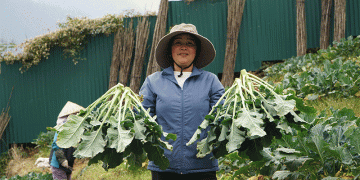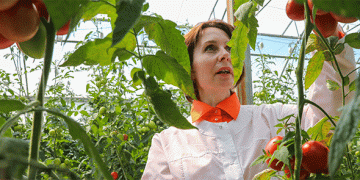In this article, we delve into the latest and most exciting breakthrough in fruit farming, which promises to transform agriculture as we know it. Discover how researchers have managed to cultivate larger strawberries, unlocking incredible potential for increased yields and improved profits. This fascinating development is sure to captivate farmers, agronomists, agricultural engineers, farm owners, and scientists working in agriculture.
Imagine a future where strawberries grow to sizes beyond your wildest imagination, providing bountiful harvests and enticing consumers like never before. Well, that future is now upon us! According to the latest data from Phys.org (https://phys.org/news/2023-07-fruit-consumers-larger-strawberries-year.html), scientists have successfully developed a groundbreaking technique that results in significantly larger strawberries, revolutionizing the landscape of fruit farming.
The research, conducted by a team of dedicated scientists, focused on enhancing the genetic potential of strawberries by employing innovative breeding methods and genetic engineering. After years of meticulous experimentation, the team has finally cracked the code to unlock the strawberries’ hidden growth potential.
So, what does this mean for farmers, agronomists, and agricultural engineers? The implications are immense. With the ability to grow larger strawberries, farmers can now achieve higher yields on the same amount of land, maximizing their productivity and profitability. Larger strawberries also mean more appealing produce for consumers, translating to increased demand and higher prices in the market.
Farm owners can look forward to an enhanced competitive edge in the industry, as their farms become renowned for producing superior strawberries that stand out among the rest. The innovative farming practices and technology involved in this development will undoubtedly attract skilled agricultural professionals eager to work with cutting-edge methods.
Furthermore, this breakthrough does not only apply to strawberries but holds the potential to influence other fruit crops as well. The techniques and knowledge gained from this research could be adapted to improve the yield and quality of various fruits, leading to a cascading effect of progress within the agricultural sector.
Despite the promising outlook, it’s important to acknowledge that implementing these advancements on a large scale might come with some challenges. It is essential to address concerns regarding the potential impact on biodiversity, consumer perception of genetically modified crops, and the long-term sustainability of these new practices.
In conclusion, the discovery of larger strawberries through innovative breeding methods and genetic engineering marks a turning point in modern agriculture. This breakthrough will undoubtedly captivate farmers, agronomists, agricultural engineers, farm owners, and scientists alike. With the potential to significantly boost yields, profits, and consumer appeal, this development holds the promise of a brighter, more sustainable future for fruit farming.
Tags: Agriculture, Fruit Farming, Strawberries, Crop Yields, Agricultural Innovation, Genetic Engineering, Farm Management, Sustainability, Horticulture.































